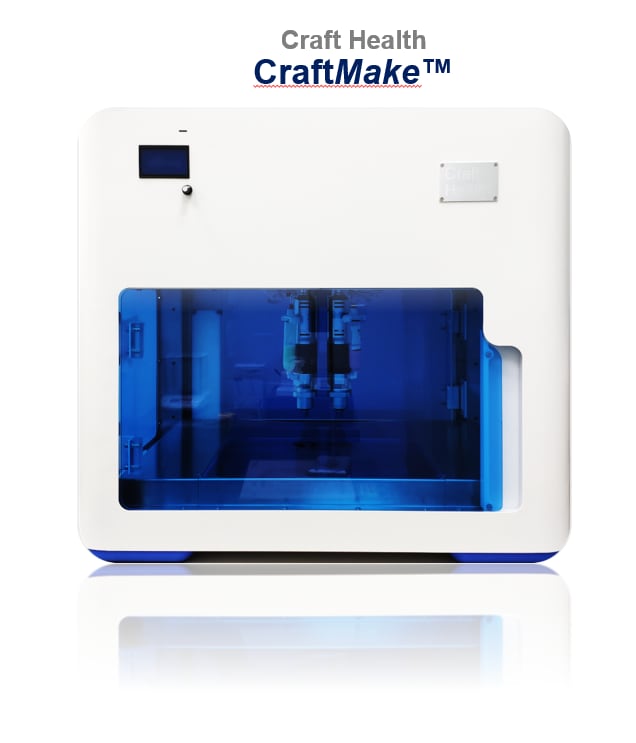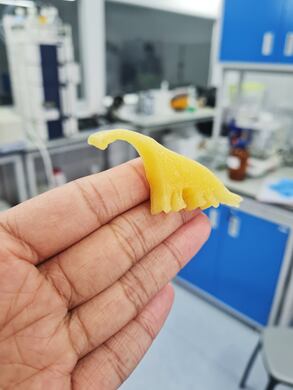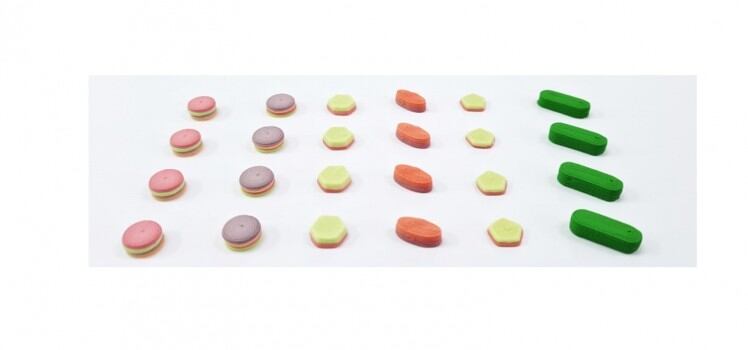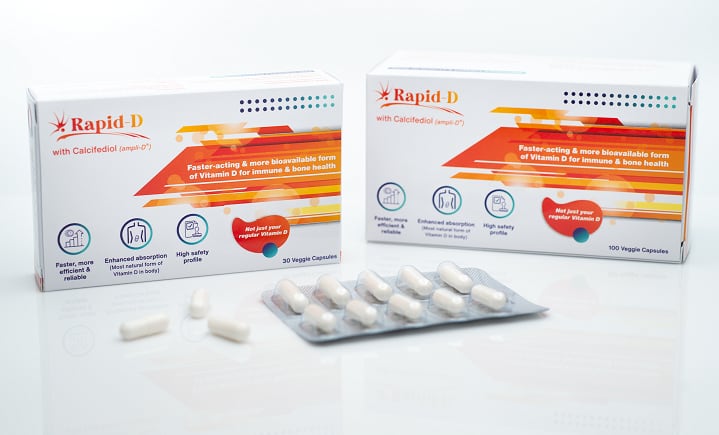The company, which started in 2019, is known for its proprietary 3D printing technique that makes customised nutraceuticals and pharmaceuticals using a semi solid extrusion method that does not involve heat or UV curing.
It recently raised SGD$1.42m in its pre-series A round, which will be used to fund a human clinical trial, expand its R&D and production team, as well as applying for Good Manufacturing Practice (GMP) certification – which would help the firm break into the overseas nutraceutical markets.
The firm currently operates a clean room in its office at Science Park, Singapore.
Co-founder and CEO Dr. Goh Wei Jiang told NutraIngredients-Asia that the firm has been in discussions with an established nutraceutical firm from South Korea and a compounding pharmacy in Australia for collaborations.
“We are moving towards GMP certification next year, which is a requirement for our collaboration with hospitals for our pharma business. Selling nutraceuticals overseas also require GMP,” Dr. Goh said.
The company has developed a 3D printing platform which consists of the 3D printer known as CraftMake, 3D printing software known as CraftControl, and 3D printable materials with controlled release profiles trademarked CraftBlends.

With this platform, the company could mix multiple active ingredients into a polypill – this allows consumers and patients to take in the required nutrients or medicines in a single tablet without having to swallow multiple pills.
To do so, the firm mixes the active ingredients with water into a paste, before putting it into the 3D printer to craft it into the desired shape and size and left to dry.
In addition, the platform can formulate products that release active ingredients in a specific order when consumed.
Aside from tablets, the firm is also able to make nutraceuticals into the form of gummies using the platform. No gelatine is used in the process and the company uses a proprietary food ingredient as an excipient to manufacture the gummies at room temperature, Dr Goh said.

Asked about the overseas collaborations, he said that the collaboration with the compounding pharmacy was to provide automated and more precise dosage amounts.
The other collaboration would focus on releasing a particular nutrient at two timings – also known as a “two-peak formulation”.
“Nowadays, there is a lot of competition in the nutraceutical space. Companies are looking to mass customised and provide personalised products for consumers and 3D printing could provide the ease of convenience.
“There is a lot of possibilities with 3D printing, it is about providing a value-add service and not about replacing the traditional mass production method,” he said.
In contrast to the conventional mass production method, he explained that 3D printing could allow companies to prototype new products and make the necessarily tweaks quickly without having to fulfill any minimum order quantity.
“Nutraceutical firms mainly come to us to make polypills. Depending on the pain points, we can formulate and manufacture the products for them, or we can license the formulations and sell the printers to them for them to manufacture the products on their own.”
Since the beginning of the business, the company has been working on building a database that contains information on the physical and chemical characteristics of more than 20 active ingredients.
Using the database allows the firm to quickly determine the requirements for formulating a product.
As such, Dr. Goh pointed out that owning the 3D printer alone does not necessarily mean that a firm is able to manufacture its products, as it would still require knowledge on how to design the formulation.
Clinical trial
As for the human clinical trial, the firm will be working with a local public hospital to find out patients’ preference and feedback when consuming three separate medicines versus a polypill which contains all three medicines.
“We are using generic medicines for the trial. We are not trying to show that our polypill is better than the generic medicines, but that our polypill is at least as good as the generic medicines in terms of effectiveness and to show the robustness of our 3D printing platform.
“The other objective is to find out patients’ experience and preference when consuming the polypill versus the three medications,” said Dr. Goh.
In the initial stage, the trial will involve five volunteers and the trial is expected to take place for four to six months. Subsequently, it could be extended into another trial testing another set of medicines.





